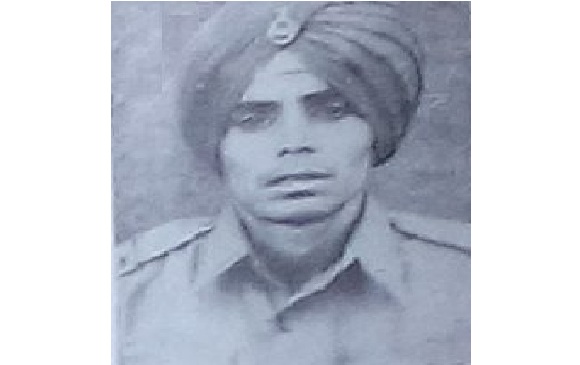In 1971, Naik Gurjant Singh’s unit, 10 Sikh, was deployed to the Rajasthan Sector under the command of Col S.D. Mehta. By October that year, the 11 Division of the Indian Army’s Southern Command had concentrated in the Barmer sector with two brigades and a squadron of 14 T-55 tanks. Its mission was to capture Naya Chor by advancing along the Gadra Road–Munabao axis, with subsidiary operations directed at Khinsar and Chachro. Over the course of the war, the division achieved one of the largest territorial gains of the conflict—seizing over 9,000 sq. km of Pakistani territory—and earned multiple battle honours, including Parbat Ali, while producing two Maha Vir Chakras and 26 Vir Chakras.
Within this campaign, 85 Infantry Brigade advanced northward, spearheaded by 10 Sikh Light Infantry, which rapidly cleared enemy outposts. The fiercest resistance was encountered at Gazi Camp and Kaljor, but concentrated Indian artillery fire demolished fortified bunkers, opening the way for deeper advances. By 5 December, Indian forces had secured Khokropar railway station, clearing the axis to Naya Chor. The most intense fighting came at Parbat Ali, a towering 200-foot-high U-shaped dune dominating Naya Chor’s approaches. This stronghold, heavily mined and defended by Pakistan’s 21 and 39 Frontier Force Rifles, posed a formidable challenge. On the night of 12/13 December, 10 Sikh and 2 Mahar launched a daring assault from the steep “knuckle end” of the dune, catching the enemy completely off guard. Feint attacks, an outflanking tank manoeuvre, and devastating artillery fire supported the offensive, and by 0400 hours, Pakistani defences had been overwhelmed.
Naik Gurjant Singh served as the section commander of one of the assaulting platoons of the Sikh Regiment during this operation. On the night of 12/13 December 1971, his platoon along with other elements was tasked with capturing Parbat Ali, a strategically significant enemy position. Leading his section with determination and courage, Naik Gurjant Singh played a crucial role in the successful assault, and the platoon secured the objective after a fierce battle. However, soon after the capture, the enemy regrouped and began forming up for a counter-attack to reclaim the lost ground. Recognizing the imminent threat, orders were issued for the platoon to charge at the advancing enemy and disrupt their assault before it could gain momentum. Naik Gurjant Singh, setting a fearless example for his men, led his section forward without hesitation. In the ensuing close-quarters combat, he fought with exceptional bravery and unmatched resolve. Engaging the enemy in a hand-to-hand fight, Naik Gurjant Singh personally bayoneted seven enemy soldiers to death, displaying extraordinary physical courage and combat skill. Even as he sustained grievous injuries during the clash, he continued to inspire his comrades by his indomitable spirit until he eventually succumbed to his wounds on the battlefield.
In addition to Naik Gurjant Singh, eleven other gallant soldiers made the supreme sacrifice during the entire operation. Among them were Subedar Gurcharan Singh, Lance Naik Joginder Singh, Lance Naik Dayal Singh, Sepoy Jaswant Singh, Sepoy Ranjit Singh, Sepoy Gurmit Singh, Sepoy Nachhattar Singh, Sepoy Shangara Singh, Sepoy Gurdev Singh, and two soldiers both named Sepoy Balwinder Singh. Through his gallantry, and determination Naik Gurjant Singh not only thwarted a dangerous counter-attack but also upheld the finest traditions of the Indian Army and the Sikh Regiment. For his outstanding bravery, unyielding fighting spirit, and supreme sacrifice, he was awarded the nation’s third-highest gallantry award, the "Vir Chakra".


No Comments